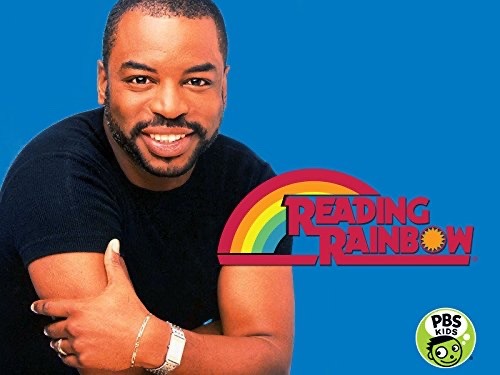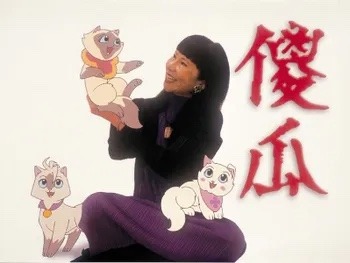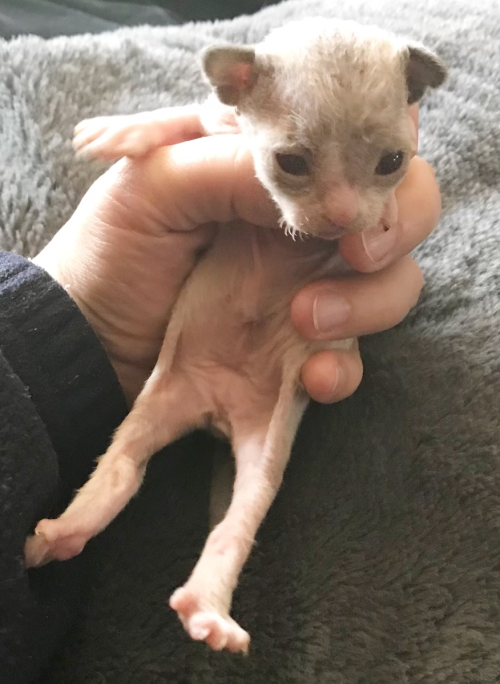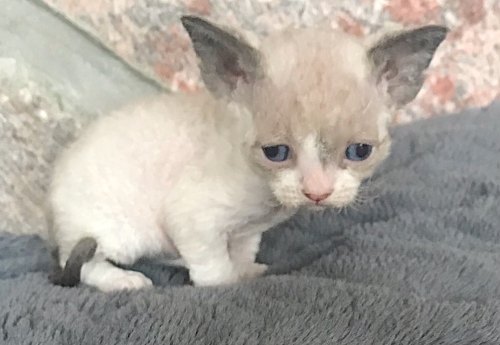Okay Time For The PBS Kids Essay
Okay time for the PBS Kids essay
Read it under the cut!
:readmore:
In 1968, before there was PBS Kids proper, there was Mr. Roger’s Neighborhood. While it came several decades before the children’s block, it laid the foundation for the themes and values present in every facet of the network’s history.
Mr. Roger famously hated children’s programming at the time. To him, it all was droll and useless. But he didn’t dissuade the medium entirely— he saw potential. Potential that led to a few smaller television jobs, and eventually the creation of Mr. Roger’s neighborhood.
Rogers didn’t invent educational TV for children, but he did perfect it. He poured real heart and soul into probably the most sincere, heartfelt program in history.
Honestly, he could have his own essay. The more things you learn about the real man of Mr. Rogers, the more you’ll like him.
Anyway, the biggest thing that makes PBS different is the fact that it earns money through grants, fundraisers, and private donors— not through sponsorships and merchandise sales. This way, PBS Kids can push programming that it feels is important, rather than programming that merely sells well.
This also means PBS is less afraid of pushing social boundaries. Money doesn’t go away when their shows become subjects of debate— and Mr. Rogers took full advantage of this.
For context, this was 1969. The Jim Crow era had just barely, barely ended. Pool segregation was still very much legal.
Mr. Rogers sharing a pool and a towel with the Black Mr. Clemmons was a pretty big deal at the time— especially on a show made for children.
Rogers was far from the untouchable sacred cow of today. When he was alive, he had a large number of detractors. Let’s just say that scene didn’t fly nicely by everyone.
Just one year after the debut of Mr. Roger’s came Sesame Street.
While Mr. Roger’s was made for all children, Sesame Street had the explicit goal of supplementing the education of underserved communities— especially inner-city Black (and later Latino) children.
While it was made to be accessible to children of all races and income levels, they definitely went the extra mile to make it something special for inner-city Black and Brown kids. (Why do you think it it’s “Sesame Street” and not “Sesame Cul-de-Sac”?)
At the time, a wholesome, sweet show set in a brownstone street was practically unheard of.
Jon Stone, the casting director, deliberately sought to make the cast as rich with color as he possibly could, bringing on a huge amount of Black talent such as Loretta Long, Matt Robinson, and Kevin Clash, as well as featuring Black celebrities as guest stars. Later, the show would expand its horizons, bringing on actors from Latino, Asian, Native American, and many more backgrounds.
White actors were and still are a minority on show.
In addition to letters and numbers, the purpose of Sesame Street is clear: make kids of color know that they’re smart, beautiful, and loved.
It doesn’t get more explicit than this.
I want to point out this comment because it’s funny

You’re telling me this bitch isn’t Hispanic???

Anyway, these two were followed up by Reading Rainbow in 1983. And guess what?

That’s right. Non-white focus.
These three shows, (along with other, lesser-known programs like Lamb-Chops Play Along, Newton’s Apple, and Shining Times Station (who featured Ringo Starr himself?? seriously how did that happen and why does no one talk about it) and some other nostalgic favorites like Bill Nye the Science guy, The Magic Schoolbus, Arthur, and Thomas the Tank Engine) aired on the new PTV block, which evolved into PBS Kids in 1999, bringing along Between the Lions, Dragon Tales, and many more.
Arthur is another stand-out that I’d like to talk about— it doesn’t have the same racial focus of Sesame Street, but it does focus on different income levels. The characters have various housing situations, from apartments to mansions to no home at all.
It also takes cues from Sesame Street and Mr. Roger’s in regards to talking about tough topics, though as Arthur has a slightly older target audience, it discusses things through stories rather than talking directly to the audience.
Cancer, religion, workplace discrimination, along with current (at the time) events such as 9/11 and Hurricane Katrina are all discussed on the show.
Another big focus on Arthur is disability. For once, they don’t stick a character in a wheelchair and then pretend he’s not in a wheelchair. A striking number of major characters either develop or get diagnosed with physical disabilities and/or neurodivergences, such as asthma, severe food allergies, and dyslexia, and they deal with them in very realistic ways.
A handful of minor characters have more obvious disabilities, and THANK GOD they go beyond the trite messaging of “disabled people can do everything abled people can do! everyone clap now!”
One episode in particular has the awesome message of “holy shit stop trying to help me all the time— it’s patronizing as fuck. I can get around just fine without you stepping on eggshells and trying to be the hero all the fucking time”
There are sooo many other shows I could talk about, but I can’t write about them all. I’m definitely gonna point out some more standout ones, though.
Sagwa, the Chinese Siamese Cat
Created by Chinese-American woman Amy Tang

Dragonfly TV
Features a multitude of female and non-white scientists to foster an interest in science with kids in those groups

Maya & Miguel
One of the network’s first Hispanic-led shows

SciGirls
I shouldn’t have to explain what the goal of this one was.

Molly of Denali
When was the last time you saw a show that treated Native Americans as people? Much less a children’s show? 90% of the cast is Athabascan, and the show revolves around Athabascan culture, not shying away from topics like boarding schools and modern-day racism. Most of the writers are also Athabascan, and the show even has an official Gwich’in dub!

It’s this commitment to real, authentic social justice that makes PBS Kids so much different from its competitors. Could you imagine the Paw Patrol dog looking at the camera and earnestly discussing what happened to George Floyd? I don’t think so— but Arthur talked specifically about it, Sesame Street did an hour long special about race in general, and the network itself made a 30 minute special.
Disney Jr. could never. (Other than trying to teach colorblindness, of course.)
I’m gonna have to cut this into two parts, since I just hit the image limit
More Posts from Bitchy-witchy and Others
I couldn't sleep so I made chapter 2 <33
Au by @loboazul16 your daily reminder ❤️❤️❤️
People are so stupid about snakes. If there's a little black racer chilling outside just leave it alone, you don't have to kill it, it's probably dealing with all your pests for you, jesus christ
sorry i never replied. everyday is blending together and im losing sense of time
Can’t wait for, like, 2025 when we look back on the 2018/2019 era and say “hey, remember when we were all really freaking depressed? That was a crazy time! Glad we aren’t like that anymore”




Have some Logan angst doodles from my sketchbook
And a doodle from the yet-to-be-released 'comfort' chapter of my fic, Malfunction

And here's a little happy Logan with some implied angst, as well 👌

a lot of you probably knows Belphie's story, but I'll summarize just in case.
Devon Rex cats are better for people with allergies (less shed fur + less Fel d1 protein in their saliva), so on February 16, 2024, I went the breeder route and put down a deposit. before Belphie even opened his eyes, he was mine!




every Friday, the breeder sent me a new photo. I had a broken leg, and was basically rotting in bed at that point, so it was the best part of my week. then, at 12 weeks old, I BROUGHT HIM HOME!


at first, he was so alive! like a wind-up monkey that never shut off. he dangled from the wall-hangings, savaged my feet as I walked, and used my elderly cats as jumping poles to do cool acrobatics over. but all this gradually faded.
first, he stopped playing. then he stopped climbing. then he stopped moving much at all. my vet ran tests on him and found multiple pathogens (calcivrius + mycoplasma), but the medication didn't help - he kept declining.


on September 17th, I woke up to find him swollen like a balloon. we finally had an answer: he had Feline infectious Peritonitis, aka FIP. before 2017, this would've been a death sentence. he would've kept bloating until he drowned in his own fluids. and before 2024, I would've been forced to inject him with black market drugs. but thankfully, South Tower Animal Hospital in Fergus, Ontario was doing a study on the oral medication! we drove two hours, enrolled him, and left with the GS-441524 pills.


and he went from those photos above.....to this:

I thought Belphie would die as a kitten. I'd accepted that he would never grow up. but now he gets to LIVE!
and all for the low cost of $7,553.....ahhhahaha........god.
that + a recent home disaster has wiped out my savings, but I still need to pay for Belphie's medication. to remain in this study, I need to do bloodwork monthly until Feb 2025, and he'll need daily pills until March 2025.




I've put a risograph print + enamel pin set up at greerstothers.shop. I hate asking for help, but if you'd like to support Belphie's continued treatment, please consider checking them out!
there is still time. there is still time. until your bones are in the fucking ground there is still time.
reblog if your name isn't Amanda.
2,121,566 people are not Amanda and counting!
We’ll find you Amanda.






-
 laikiirnodel liked this · 1 month ago
laikiirnodel liked this · 1 month ago -
 ghost-zoast liked this · 3 months ago
ghost-zoast liked this · 3 months ago -
 tanaleth liked this · 4 months ago
tanaleth liked this · 4 months ago -
 tiniestapocalypse reblogged this · 5 months ago
tiniestapocalypse reblogged this · 5 months ago -
 ajolote-mexicano liked this · 6 months ago
ajolote-mexicano liked this · 6 months ago -
 tinier-bug liked this · 7 months ago
tinier-bug liked this · 7 months ago -
 balaenabooks liked this · 9 months ago
balaenabooks liked this · 9 months ago -
 afraidtoblink liked this · 11 months ago
afraidtoblink liked this · 11 months ago -
 ariexcheem reblogged this · 11 months ago
ariexcheem reblogged this · 11 months ago -
 fastofthekillones reblogged this · 11 months ago
fastofthekillones reblogged this · 11 months ago -
 fastofthekillones liked this · 11 months ago
fastofthekillones liked this · 11 months ago -
 bookgirlfan liked this · 11 months ago
bookgirlfan liked this · 11 months ago -
 gunsli-01 reblogged this · 11 months ago
gunsli-01 reblogged this · 11 months ago -
 gunsli-01 liked this · 11 months ago
gunsli-01 liked this · 11 months ago -
 kaymcgivemeacall liked this · 11 months ago
kaymcgivemeacall liked this · 11 months ago -
 ranichi17 reblogged this · 11 months ago
ranichi17 reblogged this · 11 months ago -
 leanders-halcyon reblogged this · 11 months ago
leanders-halcyon reblogged this · 11 months ago -
 ladybugsandlattes liked this · 1 year ago
ladybugsandlattes liked this · 1 year ago -
 melodythemaybegorl reblogged this · 1 year ago
melodythemaybegorl reblogged this · 1 year ago -
 melodythemaybegorl liked this · 1 year ago
melodythemaybegorl liked this · 1 year ago -
 shining-splashstar liked this · 1 year ago
shining-splashstar liked this · 1 year ago -
 blue-hi liked this · 1 year ago
blue-hi liked this · 1 year ago -
 awakeonlan reblogged this · 1 year ago
awakeonlan reblogged this · 1 year ago -
 unidentifiablelifeform reblogged this · 1 year ago
unidentifiablelifeform reblogged this · 1 year ago -
 xirose reblogged this · 1 year ago
xirose reblogged this · 1 year ago -
 xirose reblogged this · 1 year ago
xirose reblogged this · 1 year ago -
 pakbet liked this · 1 year ago
pakbet liked this · 1 year ago -
 flamesonthesidesofmyface reblogged this · 1 year ago
flamesonthesidesofmyface reblogged this · 1 year ago -
 batshua liked this · 1 year ago
batshua liked this · 1 year ago -
 nethilia reblogged this · 1 year ago
nethilia reblogged this · 1 year ago -
 waterlilyvioletfog liked this · 1 year ago
waterlilyvioletfog liked this · 1 year ago -
 captainelliecomb liked this · 1 year ago
captainelliecomb liked this · 1 year ago -
 faithfire-writes reblogged this · 1 year ago
faithfire-writes reblogged this · 1 year ago -
 faithfire-writes liked this · 1 year ago
faithfire-writes liked this · 1 year ago -
 fireryn liked this · 1 year ago
fireryn liked this · 1 year ago -
 mariedemedicis reblogged this · 1 year ago
mariedemedicis reblogged this · 1 year ago -
 redheadedhypocrite reblogged this · 1 year ago
redheadedhypocrite reblogged this · 1 year ago -
 redheadedhypocrite liked this · 1 year ago
redheadedhypocrite liked this · 1 year ago -
 mistprints reblogged this · 1 year ago
mistprints reblogged this · 1 year ago -
 haventbeentotivoli reblogged this · 1 year ago
haventbeentotivoli reblogged this · 1 year ago -
 thechaoticaraonist liked this · 1 year ago
thechaoticaraonist liked this · 1 year ago -
 superwhosecock liked this · 1 year ago
superwhosecock liked this · 1 year ago -
 cyborg-sabi liked this · 1 year ago
cyborg-sabi liked this · 1 year ago -
 jess-the-mess2513 reblogged this · 1 year ago
jess-the-mess2513 reblogged this · 1 year ago -
 jess-the-mess2513 liked this · 1 year ago
jess-the-mess2513 liked this · 1 year ago -
 funandexploring reblogged this · 1 year ago
funandexploring reblogged this · 1 year ago -
 awkward-twat reblogged this · 1 year ago
awkward-twat reblogged this · 1 year ago

18. prefers she/her. any pronouns are fine. I put the major L in LGBT.
282 posts